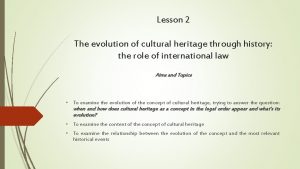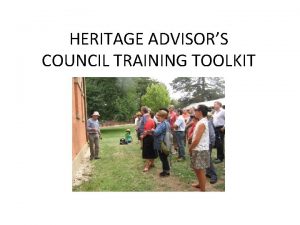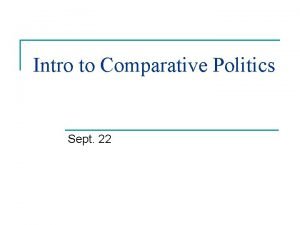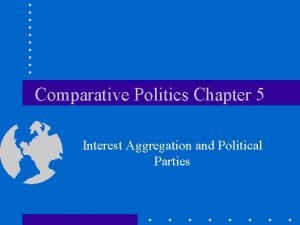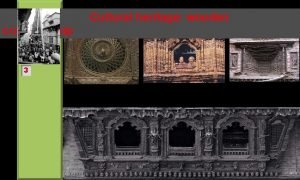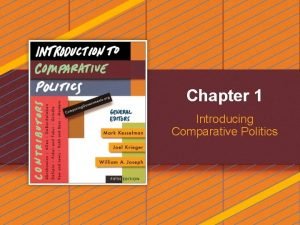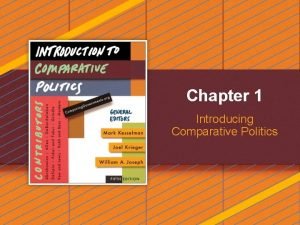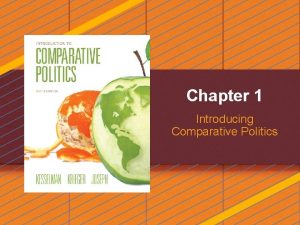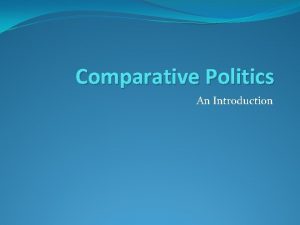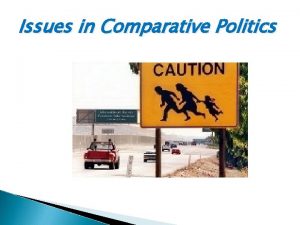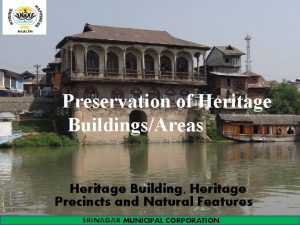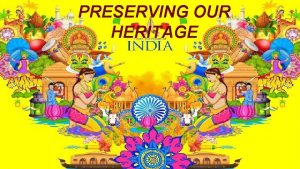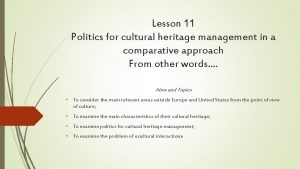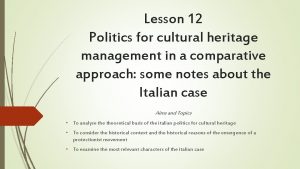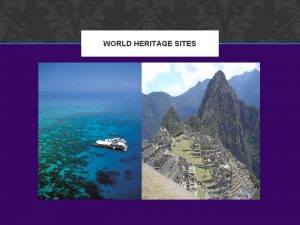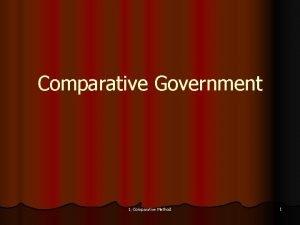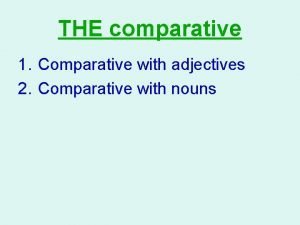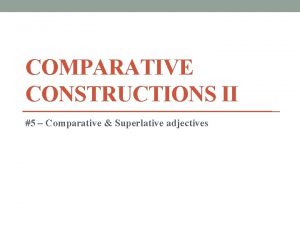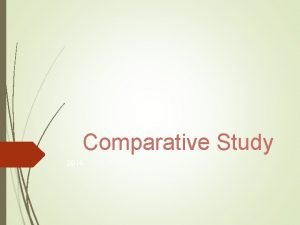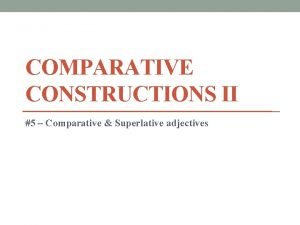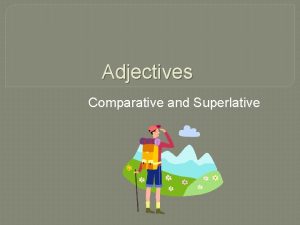Politics for cultural heritage management in a comparative







































- Slides: 39

Politics for cultural heritage management in a comparative approach A proposal of discussion about «transoceanic relations» Aims and Topisc • To examine the main elements of the Spanish experience • To consider and examine the cultural relations between the Spanish heritage and the development of South-American culture; • A divided history/a different culture?

Our space of analysis

A history of conquest? • The descovery, exploration and conquest of South America began with the descovery of America by Colombo (1492) • In 1513 Vasco Nunez de Balboa crossed the isthmus of Panama • In 1519 Hernan Cortes conquered the Aztec Empire • In 1531 Francisco Pizarro conquered the Inca Empire, founding the city of Lima

Explorers and Conquerors Hernan Cortes (1485 -1547) Cristoforo Colombo (1451 – 1506) Francisco Pizarro (1475 -1541) Vasco Nunez de Balboa

A history of independence It was the series of wars occurred between 1808 and 1833 to give independence to the different south-american countries Josè Antonio Torres (Mexico) Josè Antonio de San Martin (Argentina – Chile – Perù) Simon Bolivar (Colombia)

Descovering a cultural heritage? Machu Picchu Temple of Pachamac

Descovering a cultural heritage? Santa Cecilia Acatitlan

Descovering a cultural heritage? El Castillo – Chichen Itza Takalik Abaj

Descovering a cultural heritage? Calakmul Mayapan

Descovering a cultural heritage?

Some elements around the Spanish system of protection The first laws At the beginning of the protectionist movement in Spain we find two main institutions encharged of the protection: a)The Academy of History: found in 1738 by Phiilip V, it had general powers of inspection and inventory of monuments; b) The Academy of Fine Arts: founded in 1752 by Ferdinand VI, it had specific competencies for works of architecture;

Real Cédula – 1738 It defines the first Statute of the Academy of History The Academy of History today

Palacio de Goyeneche – Calle de Alcalà – Madrid Academia des Bellas Artes de San Fernando The symbol

Some examples… El sueño del caballero – Antonio de Pereda El entierro de la sardina - Goya

A progressive centralization In 1844 it was created a Central Commission for Monuments, with Commissions at a provincial level In 1857 it was introduced a general law around educational system, referred also to the problem of protection of cultural objects. Claudio Moyano (1809 – 1890)

La Ley Moyano Some more details It was introduced on September 9 1857 and remained as General Law of Education till 1970; It established three levels of education: a) primary: obligatory from 6 to 12 years of age; b) Secundary: till 18 years of age; c) University It introduced a series of rules for the education and the study of art and history of art; At the beginning of the XX° Century it was, finally, introduced a Ministry for the Public Education and a General Direction for the Fine Arts.

The experience of the Republic and the Constitution of 1931 It recollected the results of previous laws (1911, 1915, 1926), which introduced the idea of an Archeological National Treasure; It introduced the idea of a National Treasure put under the protection of the State; Art. 45: «all the artistic richness of the country constitutes the National Treasure of the Nation and will be under the protection of the State. The State will protect also the sites recognized for their natural beauty or for their artistic or historical value» ; The Constitutional basis was applied through a specific law promoted and introduced in 1933 wich remained also after the Civil War

Under the Regime

An authoritarian and conservative regime The Church The Monarchy National Tradition

An opening system? Law 22 July 1958 creating a system of protection for national, provincial and local monuments; Law 20 November 1964 – introducing a system of rules to protect movable objects; Law for the protection of natural spaces and sites – 1975; Three administrative structures: a) Supervisor of Fine Arts; b) Supervisor for devasted areas; c) Supervisor of Architectur

The system today At the basis of the system it is the Constitution introduced in 1978 (6 December), the foundamental law of the State; It determined the transition of Spain from an authoritative regime to a constitutional and representative system; It allowed the process of development and modernization of Spain.

Adolfo Suarez Gonzalez (1932 – 2014) Felipe Gonzales Marquez (1942 -)

Centralization/Decentralization The Constitution establishes the unity of the State, but the art. 2 recognizes the original character of spanish nationalities and of their territorial context; National character of spanish territorial autonomies is also recognized by the art. 143: it introduces the power of establishing «autonomous Communities» for Provinces having historical, cultural and economic defined characteristics, or having a so-defined «entidad regional historica» ; Among the powers recognized to autonomous communities are also powers of management of cultural asset.

Nation/Autonomies To avoid risks related to the unity of the State, the Constitution and the laws reognize the difference between culture as a value and competencies recognized to the autonomies around cultural heritage; Some autonomous communities introduced in their Statutes some exclusive competencies around cultural heritage: so it is in the case of Paìs Vasco, Galicia, Andalucìa; The Constitutional Judge established cultural value has a general meaning, so the competencies are divided between State and autonomous communities in a very defined manner

The State is exclusively competent around the management and protection of: a) General legislation for the protection of environment; b) Protection of cultural, artistic, monumental asset of Spain against exportation; c) Museums, libraries and archives which are ownership of the State

The autonomous communities Autonomous communities are exclusively competent around: a) Museums, libraries, musical institutes, onsidered as relevant for the local communities; b) Monuments of interest for the local communities; c) Development of the culture of the local communities

The last result The Law for the Historical Spanish Asset (1985) defines a new system of rules balancing competencies of the State and autonomous communities; Two other laws – 1991 and 1994 – completed the system the same way; Consejo del Patrimonio Historico It is composed by one member of each autonomous community and one member of the administration of the State, who is the President of the body

The role of the local communities They have competencies around the museums and musical institutes; It has been created a particular system – Systemas Espanoles de Archivos, Museos y Bibliotecas – representing an alternative system for the development of the protection of cultural heritage and also for the development of the culture; The basis of the role of local communities is given by the Constitution, by the General Law of 1985, and by some other particular laws around specific categories of cultural objects.


A South-American cultural heritage? The first matter to consider is that one of the so-called «patrimonio cultural exiliado» : the amount of cultural objects stolen and trasnported from Spain to South-America; In Spain the law for artistic national treasure – Ley relativa al patrimonio artistico nacional – introduced established that «artist treasur is bound to our national history»

A Soouth-American heritage after the independence Two main issues Building an independent identity against the former colonial identity: eliminating each trace of former colonia identity; Building a sort of «purity» in «new countries identity» linked to the pre-colombian past

The example of Colombia Law n. 34 – May 29 1881 – constitution of the National Museum and general law to protect “objects with a value for the national memory and for the development of science” Law n. 59 – June 11 1881 – introduction of a Committee for the study and development of natural sciences

…other examples Dominican Republic – 1870 – protection of the national monument “Alcazar de Colon” Honduras – 1870 – protection of the Valley of Copán 1891 – National Museum – with the cooperation of the Peabody Museum Costa Rica – 1881 – National Archive Nicaragua – 1870 – National Archive Nicaragua – 1897 – Industrial, Commercial, Scientific National Museum San Salvador – 1870 – National Museum Bolivia – 1906 – protection of the natural and archaeological site of Tihuanaco

Palacio Virreynal – Alcazar de Colon

Valley of Copan - Honduras

Valley of Copan

Tihuanaco - Bolivia

Tihuanaco

Tihuanaco
 Obstructed heritage in hindu law
Obstructed heritage in hindu law World heritage is our heritage slogan
World heritage is our heritage slogan Sapratibandha
Sapratibandha Cultural heritage meaning
Cultural heritage meaning Intangible cultural heritage and sustainable development
Intangible cultural heritage and sustainable development Hudhud chants of the ifugao threats
Hudhud chants of the ifugao threats The byzantine empire preserved the cultural heritage of
The byzantine empire preserved the cultural heritage of Cultural heritage advisors
Cultural heritage advisors Comparative theory politics a level
Comparative theory politics a level Global politics andrew heywood
Global politics andrew heywood Political comparative and superlative
Political comparative and superlative What is interest aggregation
What is interest aggregation Iso 22301 utbildning
Iso 22301 utbildning Typiska novell drag
Typiska novell drag Tack för att ni lyssnade bild
Tack för att ni lyssnade bild Vad står k.r.å.k.a.n för
Vad står k.r.å.k.a.n för Shingelfrisyren
Shingelfrisyren En lathund för arbete med kontinuitetshantering
En lathund för arbete med kontinuitetshantering Underlag för särskild löneskatt på pensionskostnader
Underlag för särskild löneskatt på pensionskostnader Personlig tidbok
Personlig tidbok Anatomi organ reproduksi
Anatomi organ reproduksi Vad är densitet
Vad är densitet Datorkunskap för nybörjare
Datorkunskap för nybörjare Boverket ka
Boverket ka Att skriva en debattartikel
Att skriva en debattartikel För och nackdelar med firo
För och nackdelar med firo Nyckelkompetenser för livslångt lärande
Nyckelkompetenser för livslångt lärande Påbyggnader för flakfordon
Påbyggnader för flakfordon Arkimedes princip formel
Arkimedes princip formel Offentlig förvaltning
Offentlig förvaltning Kyssande vind analys
Kyssande vind analys Presentera för publik crossboss
Presentera för publik crossboss Vad är ett minoritetsspråk
Vad är ett minoritetsspråk Kanaans land
Kanaans land Treserva lathund
Treserva lathund Epiteltyper
Epiteltyper Claes martinsson
Claes martinsson Cks
Cks Programskede byggprocessen
Programskede byggprocessen Bra mat för unga idrottare
Bra mat för unga idrottare



